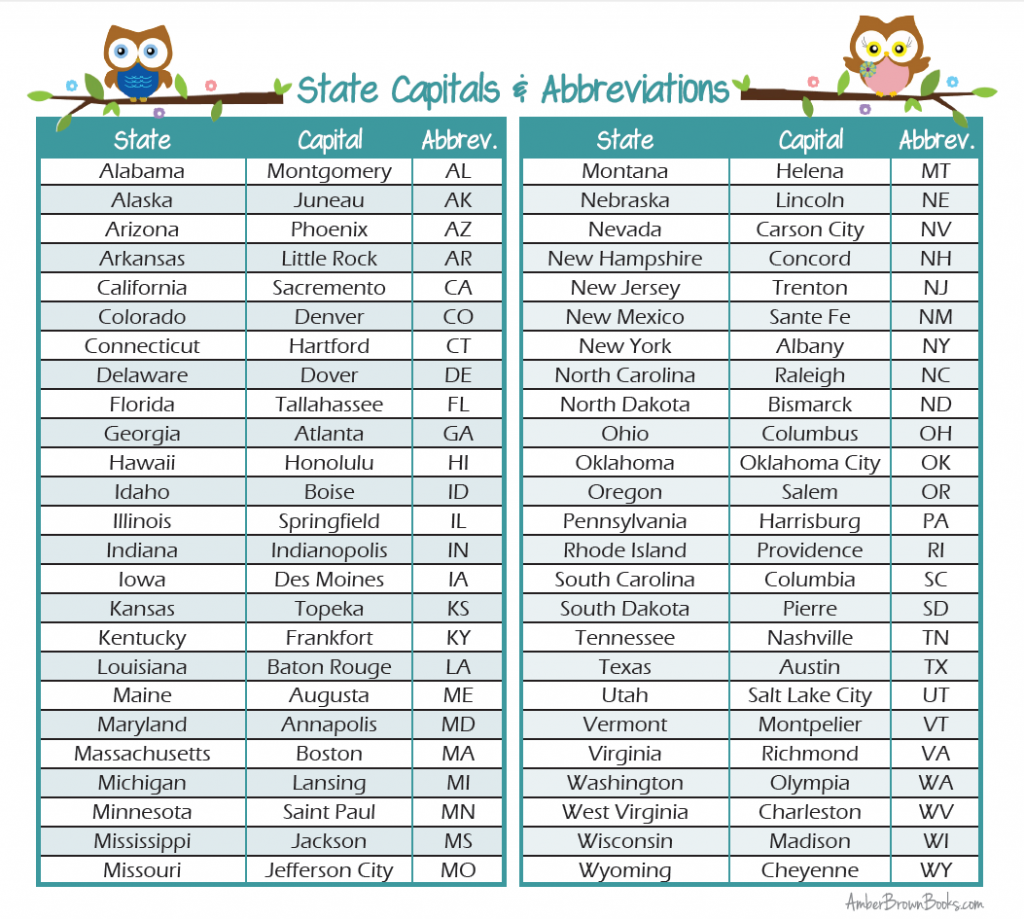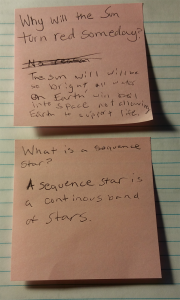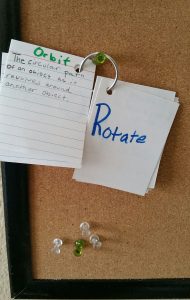Fun (& Educational) Activities on the Go
 Today’s parents are truly busy people. Between work (whether in-the-home or outside jobs), preparing dinner, shepherding kids from one activity to another, we have a lot to do – and spend a lot of time in the car. As a busy working mom myself, I get it… It can be hard to fit in time to teach our youngsters new things, but over the years I’ve learned that car time can also be a great time for quick, fun learning activities that kids love (especially the younger ones). We all know kids love playing games – if you can merge learning with playing, then it becomes a win-win for everyone! Below I’ve listed some of the car games/activities I’ve used with my son over the years. I’ve used these activities to keep him entertained (and learning!) in the car, while pushing the cart in the grocery store, or simply walking around in the mall. Take a look!
Today’s parents are truly busy people. Between work (whether in-the-home or outside jobs), preparing dinner, shepherding kids from one activity to another, we have a lot to do – and spend a lot of time in the car. As a busy working mom myself, I get it… It can be hard to fit in time to teach our youngsters new things, but over the years I’ve learned that car time can also be a great time for quick, fun learning activities that kids love (especially the younger ones). We all know kids love playing games – if you can merge learning with playing, then it becomes a win-win for everyone! Below I’ve listed some of the car games/activities I’ve used with my son over the years. I’ve used these activities to keep him entertained (and learning!) in the car, while pushing the cart in the grocery store, or simply walking around in the mall. Take a look!
Play the “Alphabet Game”
There are actually two games that fall under the “alphabet game”. Both of these games are great tools to reinforce skills in alphabetizing and reading fluency, as well as expanding vocabulary.
- ABC Game 1 is used specifically when riding in the car. As we drive around, we try to find road signs and businesses with names in alphabetical order, and yell them out to one another. We would race to try to be the first to find the business or sign with the next letter. For example, we would see Applebees, Barnes and Nobles, and a sign that reads “College Drive” (shout out to the LSU fans!). We would continue on until we find as many in alphabetical order as possible. Believe it or not, we’ve made it all the way to Z before!
- ABC Game 2 can be played in the car, while waiting at the table in a restaurant, or anywhere! The object of this game is to think of the most difficult vocabulary words possible in alphabetical order, and take turns. For example, I might say “amazing”, and my son would say “benefit”. You continue alternating turns until you get to the end. Of course the words are more difficult for older kids, and easier for the younger ones, but I would encourage the youngster to think of a more challenging word he has heard or read before. Note – you just may have to skip the letters “X, Y, Z” – those can be difficult! 🙂
Math Questions
So my son may be a little “unique”, but he loves when I make up math word problems or equations. This is also something that can be done anywhere on the go. I started out when he was younger just asking him addition and subtraction facts, then progressed to multiplication and division facts. Now you just might hear him reducing fractions or solving multi-step problems while he trails behind me in a store!
Using the few spare minutes to have your child(ren) answer math questions not only increases their fact fluency, but also increases their mental skill ability to solve problems without needing the use of pencil and paper.
Online Trivia
Longer road trips are perfect for online trivia questions! Can your child name all of the United States Presidents? What about all 50 state abbreviations or state capitals? If you are in the passenger seat, grab your cell and search for a list to quiz them on. Or, if you’re traveling through a new area, let your child search for interesting facts about that city or state and read them aloud to you. You’ll both get a chance to learn something new! Click here to get a free PDF download of my state capital packet. Some pretty good websites to check for trivia include MentalFloss.com, History.com, FunTrivia.com, and more. *I would advise checking out the content first, just to be sure it’s viewable for young eyes.
I Spy with Tally Marks
Also great for longer road trips would be the old-school “I Spy” game. Create a list of things, animals, places, or objects you anticipate seeing, and have your child keep a running tally in a notebook of how many of each item he or she saw. Depending on age and ability, they can then create bar graphs, line graphs, or circle graphs to reflect their findings. This is great skill practice for sorting and categorizing with younger students, and sharpening graphing skills of the older ones.

These activities are great for allowing your youngsters to practice skills in a fun way and spend quality conversation time with you. My son recently turned 10 years old, and although we don’t play some of these “games” as often as we used to, he still gets a kick out of them, and will randomly ask to start one from time to time.
Try one or all of these fun, educational activities and tell me how it worked out! Also, if you have a few different games you use, feel free to share with us below!



 to study, I would assure them I did – then midterm grades would come out. They would assume I’d done nothing, I’d insist I’d done something, and the end result would be three frustrated people as I scrambled to salvage my grades for the report card.
to study, I would assure them I did – then midterm grades would come out. They would assume I’d done nothing, I’d insist I’d done something, and the end result would be three frustrated people as I scrambled to salvage my grades for the report card. Study Strategy #2: Copy Class Notes
Study Strategy #2: Copy Class Notes As my son reads over his notes and information (often times he reads to me while I’m cooking), I’ve instructed him to use sticky tabs to notate questions he has about the material. When he’s finished, he searches online to answer each question. I have him explain his findings to me to ensure he understands the material. I think this strategy is beneficial because it allows the student to identify gaps in his/her understanding and take ownership in researching to bridge the gaps.
As my son reads over his notes and information (often times he reads to me while I’m cooking), I’ve instructed him to use sticky tabs to notate questions he has about the material. When he’s finished, he searches online to answer each question. I have him explain his findings to me to ensure he understands the material. I think this strategy is beneficial because it allows the student to identify gaps in his/her understanding and take ownership in researching to bridge the gaps.